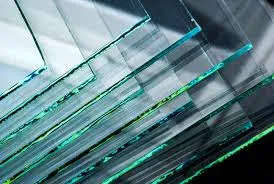The Use and Benefits of Tinted Glass in Modern Architecture
In recent years, tinted glass has gained significant popularity in architecture and design, becoming a staple in both residential and commercial buildings. This trend is driven by a combination of aesthetic preferences, energy efficiency demands, and practical benefits that tinted glass provides. The use of tinted glass not only enhances the visual appeal of structures but also serves various functional purposes.
One of the primary advantages of tinted glass is its ability to reduce glare and improve indoor comfort. In buildings with large windows or expansive glass facades, sunlight can create uncomfortable glare that disrupts activities such as working, studying, or simply relaxing. Tinted glass mitigates this issue by filtering the intensity of sunlight, creating a more pleasant environment. As a result, occupants can enjoy natural light without the accompanying discomfort that often comes with excessive brightness.
The Use and Benefits of Tinted Glass in Modern Architecture
The energy-saving benefits of tinted glass extend beyond lighting. It also aids in temperature regulation. The tinted surface reflects a portion of solar radiation, which helps in keeping indoor spaces cooler during warmer months. This feature is especially valuable in regions with hot climates, as it reduces the load on air conditioning systems, further lowering energy consumption. Buildings that utilize tinted glass can maintain comfortable temperatures more efficiently, translating to reduced energy costs and a smaller carbon footprint.
tinted glass use
In addition to energy efficiency and glare reduction, tinted glass offers an enhanced level of privacy. For property owners, particularly in urban areas, maintaining privacy can be a significant concern. Tinted glass acts as a barrier to prying eyes without completely sacrificing natural light. This characteristic makes it an attractive option for offices, residential apartments, and public buildings where visibility from the outside is a consideration. With tinted windows, occupants can enjoy their space without feeling exposed, creating a sense of security and comfort.
Aesthetic appeal is another compelling reason for the growing popularity of tinted glass. Architects and designers appreciate the sleek, modern look that tinted glass provides. Its availability in various shades and finishes allows for creative expression in architectural designs. Tinted glass can complement different building materials, enhance color schemes, and contribute to the overall theme of a structure. This adaptability makes it an ideal choice for a wide range of architectural styles, from contemporary skyscrapers to traditional homes.
Furthermore, tinted glass is known for its durability and ease of maintenance. Unlike other materials that may require frequent upkeep, tinted glass surfaces are relatively easy to clean and maintain, making them a practical choice for both residential and commercial applications. Modern coatings also help resist scratches and other forms of damage, extending the lifespan of tinted glass installations.
In conclusion, the use of tinted glass in modern architecture is multifaceted, offering a blend of aesthetic, functional, and energy-efficient benefits. From glare reduction and energy savings to enhanced privacy and durability, tinted glass is an attractive option for today's building designs. As the demand for sustainable practices and comfortable living spaces continues to grow, the popularity of tinted glass is likely to increase, cementing its role as a fundamental element in contemporary architecture.
 Afrikaans
Afrikaans  Albanian
Albanian  Amharic
Amharic  Arabic
Arabic  Armenian
Armenian  Azerbaijani
Azerbaijani  Basque
Basque  Belarusian
Belarusian  Bengali
Bengali  Bosnian
Bosnian  Bulgarian
Bulgarian  Catalan
Catalan  Cebuano
Cebuano  Corsican
Corsican  Croatian
Croatian  Czech
Czech  Danish
Danish  Dutch
Dutch  English
English  Esperanto
Esperanto  Estonian
Estonian  Finnish
Finnish  French
French  Frisian
Frisian  Galician
Galician  Georgian
Georgian  German
German  Greek
Greek  Gujarati
Gujarati  Haitian Creole
Haitian Creole  hausa
hausa  hawaiian
hawaiian  Hebrew
Hebrew  Hindi
Hindi  Miao
Miao  Hungarian
Hungarian  Icelandic
Icelandic  igbo
igbo  Indonesian
Indonesian  irish
irish  Italian
Italian  Japanese
Japanese  Javanese
Javanese  Kannada
Kannada  kazakh
kazakh  Khmer
Khmer  Rwandese
Rwandese  Korean
Korean  Kurdish
Kurdish  Kyrgyz
Kyrgyz  Lao
Lao  Latin
Latin  Latvian
Latvian  Lithuanian
Lithuanian  Luxembourgish
Luxembourgish  Macedonian
Macedonian  Malgashi
Malgashi  Malay
Malay  Malayalam
Malayalam  Maltese
Maltese  Maori
Maori  Marathi
Marathi  Mongolian
Mongolian  Myanmar
Myanmar  Nepali
Nepali  Norwegian
Norwegian  Norwegian
Norwegian  Occitan
Occitan  Pashto
Pashto  Persian
Persian  Polish
Polish  Portuguese
Portuguese  Punjabi
Punjabi  Romanian
Romanian  Russian
Russian  Samoan
Samoan  Scottish Gaelic
Scottish Gaelic  Serbian
Serbian  Sesotho
Sesotho  Shona
Shona  Sindhi
Sindhi  Sinhala
Sinhala  Slovak
Slovak  Slovenian
Slovenian  Somali
Somali  Spanish
Spanish  Sundanese
Sundanese  Swahili
Swahili  Swedish
Swedish  Tagalog
Tagalog  Tajik
Tajik  Tamil
Tamil  Tatar
Tatar  Telugu
Telugu  Thai
Thai  Turkish
Turkish  Turkmen
Turkmen  Ukrainian
Ukrainian  Urdu
Urdu  Uighur
Uighur  Uzbek
Uzbek  Vietnamese
Vietnamese  Welsh
Welsh  Bantu
Bantu  Yiddish
Yiddish  Yoruba
Yoruba  Zulu
Zulu 

